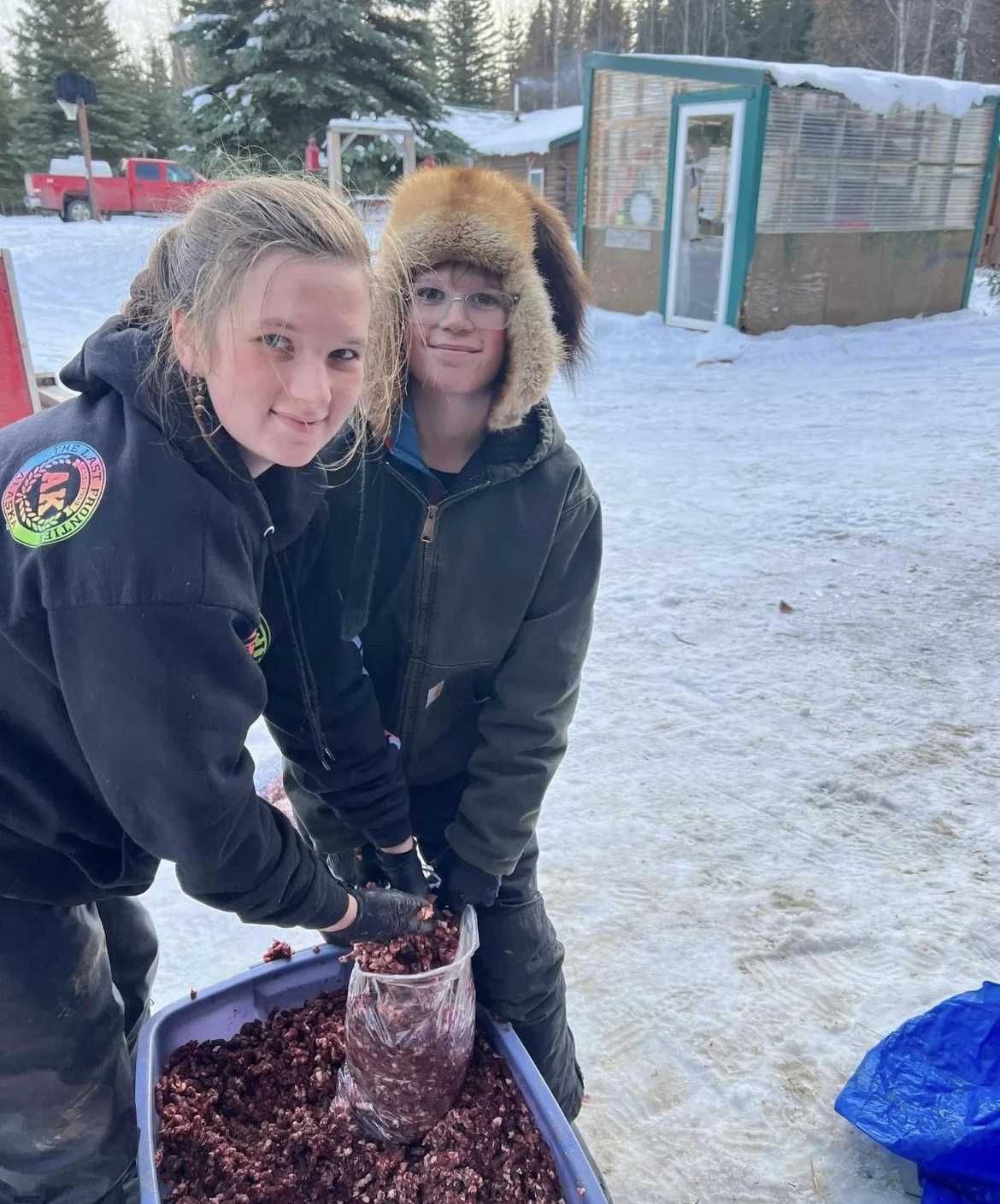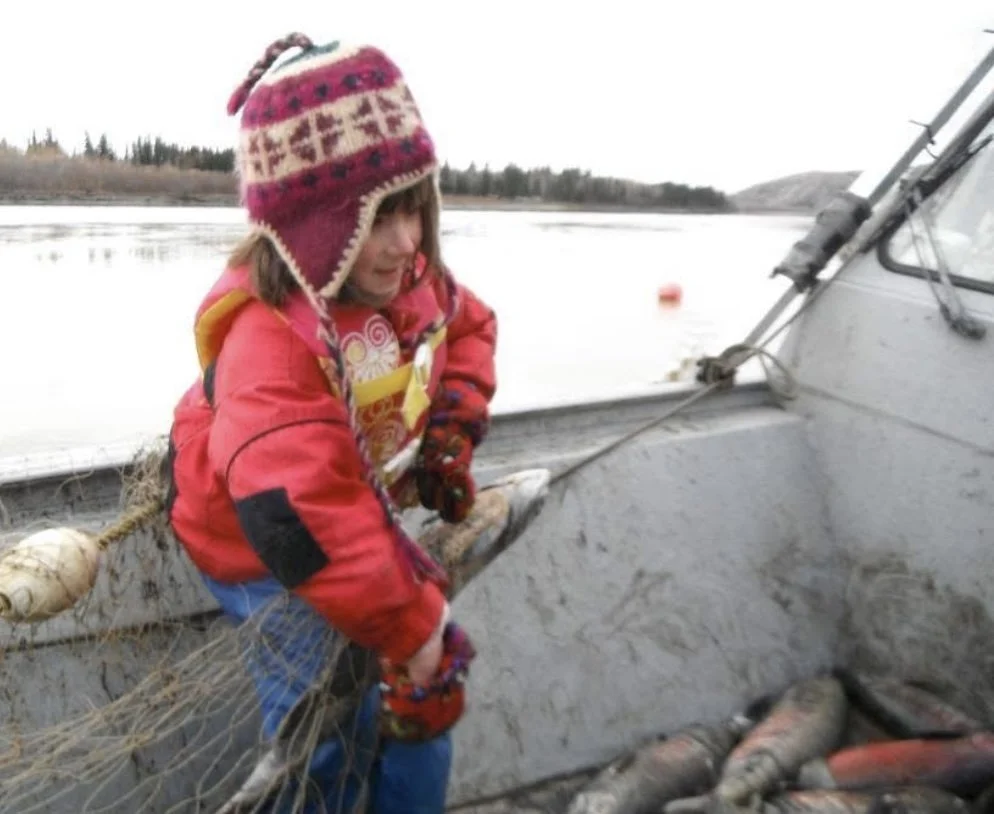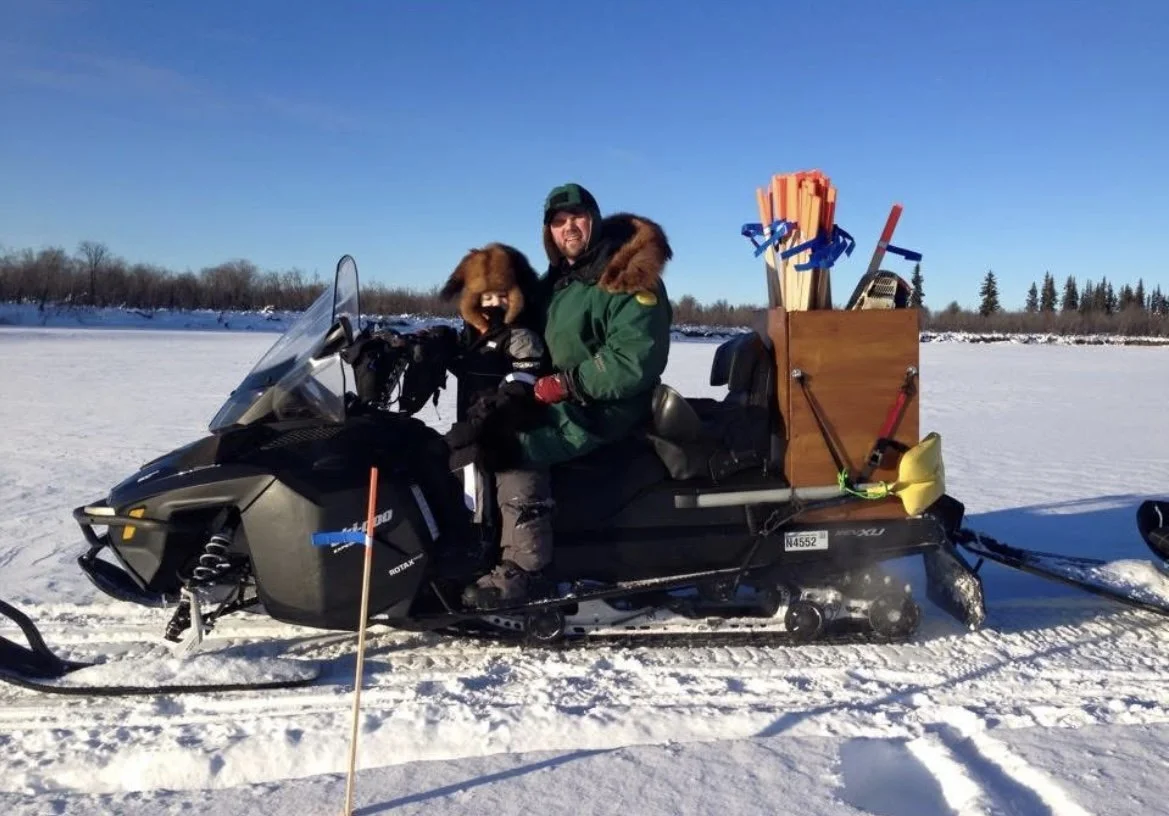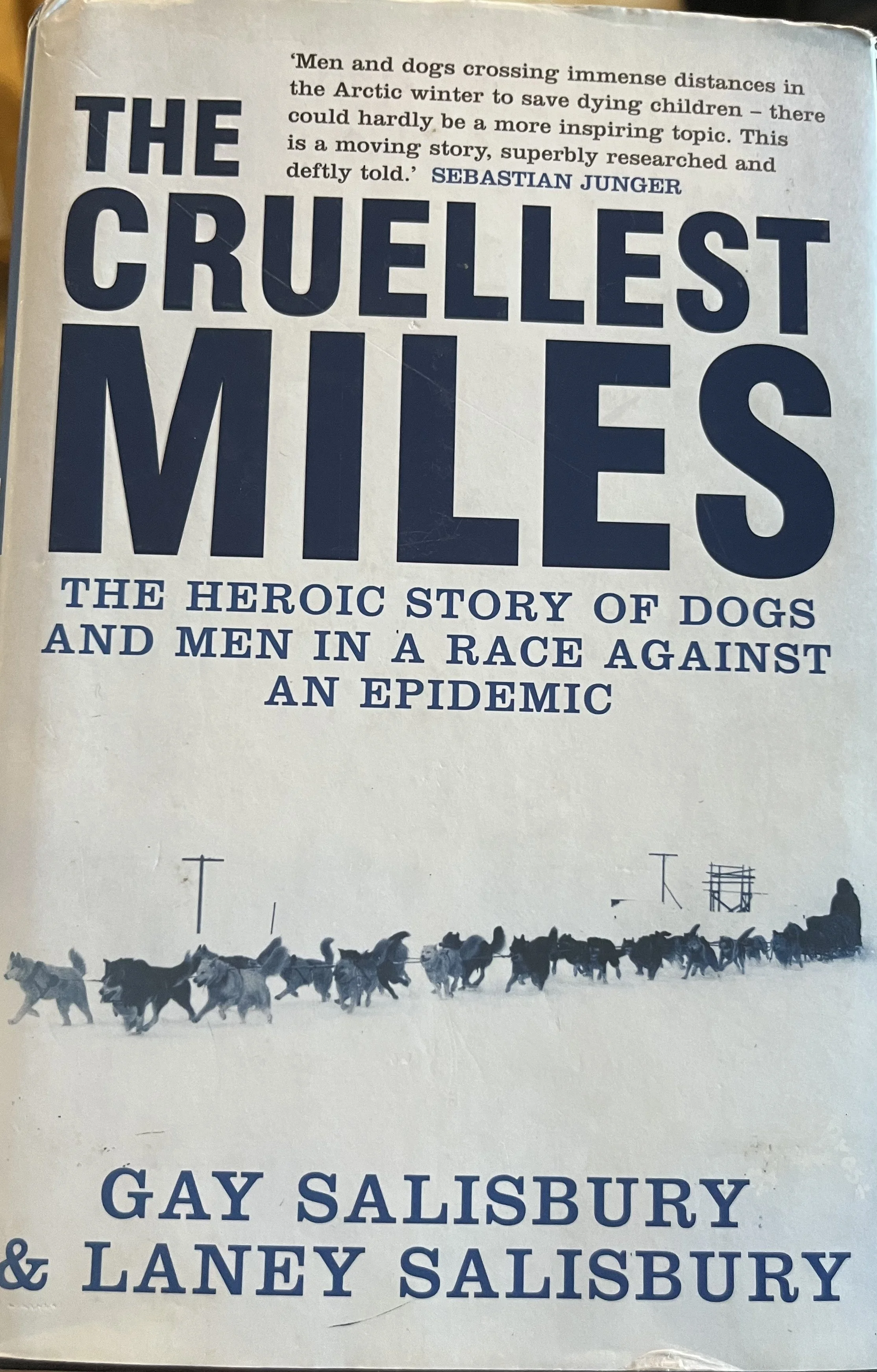From home to nome- an expedition honoring the 1925 Serum Run
HISTORY COMES ALIVE
The Robinson family has been planning a trip to Nome following the Serum Run relay for many years. The 2025 -100 year anniversary of this historic feat of men and dogs seemed like the right time to make the journey. We were not sure it was going to happen given the snow and river ice conditions and had almost decided to let the dream die. Then the Iditarod was moved north to Fairbanks and a trail was marked. How could we not make the trip?
Stanley, Emily and Wally in front of the historic Nenana Railroad Depot where the Serum Run by dog team began in 1925.
We had one day to cut and pack all of the dog meat and food needed for the trip. Straw, booties, human food, and essentials all had to be gathered. We didn’t have much time as we had to go to Jr Iditarod the next day. It was a whirlwind of packing and planning. Good thing Wally is so organized! Emily won Jr Iditarod and we got one day at home to do laundry. Then repack to go to Anchorage for the ceremonial start that her team was invited to lead. Only one more day back home to get ready to run the 750 miles from our front yard to Nome, AK with our 12 dog team.
Dog meat for the trip.
We live in a unique place and we love the fact that we are able to run to Nome without crossing a road. Alaska is still wild and untamed and we hope it stays that way! It was decided that we would leave with the dogs and snowmachine at 10am on Monday in front of the Iditarod. The Iditarod started at the same time but north of Nenana in Fairbanks. We would be ahead of the Iditarod mushers for a while but they are racing and we are taking a group of yearlings on a big camping trip to see the country so they will pass our team.
The Iditarod is a race that was never connected to the Serum Run. The Iditarod began in the 1970’s as a way to reinvigorate dog mushers by giving them a race to compete in and keep the tradition of mushing alive. The Iditarod was successful and dog mushing/racing became even bigger as it was televised around the world. When women started winning the race it fueled an even bigger fan base and the sport was huge in the late ‘80’s - the early 2000’s.
Emily fishing for the dogs in the Tanana River age 7.
The sport of dog racing is once again struggling as mushers are faced with smaller purses and increased costs for dog food. We have had a kennel in Alaska since 2000 and chum salmon caught in the Tanana River was always our primary dog feed. We cooked the salmon every other day, added rice and kibble and fat and it was an inexpensive way to feed our dogs a healthy diet. Now, the salmon are few and no one is allowed to catch them. This has hurt all of us but especially the people of the river systems who depended on the salmon for not only their dogs but also to feed their people. The fishing culture was the lifeblood of the people of the rivers and having it taken away has damaged their culture in ways most can not understand. The rhythm of life in a subsistence culture is one centered around generations of people who are in touch with the natural world. Without the salmon to catch, process and eat they are left without a purpose during those times when they would have been providing for their families and dog teams. Nothing gives a human more pride than to work with their hands, work hard day after day, and see the fruits of their labors in a smokehouse or a freezer packed with fillets. This was a rich cultural experience, one that valued the expertise of the elders in how to make a fish wheel, where to put the nets, and how to cut and smoke the fish so it would feed their family and dog team for the year.
Our winter dog salmon harvested and ready to freeze. We usually hung around 1500 fish for our small kennel.
The people of the rivers are left without salmon and the lack of fish has almost brought an end to the culture of dog mushing as well. Most villages had many dog teams and the connection with the dogs was also part of their culture. Without the salmon the cost of the dogs is prohibitive and many have turned to machines as being more economical. We have not hung fish in five years and have had to turn to beef trucked up from the lower 48 states. This has made the cost of having a dog team almost impossible to justify. It is a labor of love to maintain a kennel and we are just happy we can still have our dogs. Iditarod was successful in saving the culture of the sled dog for many years but we are once again at a crossroads for the state sport of dog mushing.
Wally and Stanley marking the Iditarod trail through the Minto Flats in 2017 when the race moved to Fairbanks
The Serum Run was never about saving dogs. The Serum Run was about saving the people of Nome, AK, from a deadly diphtheria outbreak! It was the winter of 1925 and Alaska was still the last frontier. Nome was an isolated town on the Seward Peninsula with one doctor and a nurse and a deadly outbreak of diphtheria spreading through the population. We will cover more of the history of the Serum Run as we continue down the trail but highly recommend the book THE CRUELLEST MILES by Gay and Laney Salisbury.
Highly recommend this book about the 1925 Serum Run!
Our family following the Serum Run while also running a good portion of the 2025 Iditarod. Emily, Stanley and Wally will have a grand adventure with our 12 dog team and some really cool tails from the trail when this is over. We will post as many updates as we can and share the history from the trail. Join us on our adventure and cheer us on as we cross Alaska from Home to Nome!





